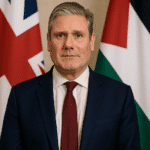Recently, tensions between the United States and Russia took a dangerous turn when Dmitry Medvedev, Russia’s former president and current deputy chairman of its Security Council, unleashed a wave of warnings in response to Donald Trump’s newly accelerated Ukraine ceasefire ultimatum. Trump had revised his plan to end the war in Ukraine from a 50-day deadline to just “10 to 12 days”, claiming he could swiftly negotiate a settlement with Vladimir Putin if re-elected. In response, Medvedev called the ultimatum “a path to nuclear war” and warned Trump to “watch his words”, reminding him of Russia’s preserved “doomsday” nuclear retaliatory systems.
Trump responded defiantly on Truth Social, labeling Medvedev’s threats “reckless”, and escalated the situation by announcing the deployment of two U.S. nuclear submarines to forward positions “just in case” Russia acted on its rhetoric. “Words are very important and can lead to unintended consequences”, he added. The move, while largely symbolic, sent a clear deterrent signal that the U.S. would not tolerate veiled threats from Russian officials, even those who technically hold no executive power.
Medvedev’s Hardline Turn and Strategic Posturing
Dmitry Medvedev, once seen as a relatively moderate figure during his presidency (2008–2012), has undergone a dramatic transformation since the invasion of Ukraine. While he initially promoted modernization and international engagement, he has since reinvented himself as a bellicose Kremlin figurehead on social media, routinely making nuclear threats, advocating for maximalist military goals, and insulting Western leaders. Although Medvedev no longer holds executive office, his proximity to Putin and visibility in public discourse suggest he plays an unofficial role in shaping Kremlin hardline messaging, according to Reuters.
Kremlin spokesperson Dmitry Peskov downplayed Medvedev’s remarks, stating they do not represent official policy. But the lack of any formal rebuke suggests his rhetoric serves a strategic purpose, floating more extreme positions to test Western responses or signal resolve without binding the Kremlin to immediate action, according to the Washington Post.
Nuclear Signaling in a Digital Era
What sets this episode apart is the transformation of geopolitical deterrence into a spectacle of social media brinkmanship. Trump’s rapid mobilization of nuclear-armed assets in response to a verbal attack reflects a world where informal statements by unofficial actors now trigger tangible strategic movements. The deployment of nuclear submarines, typically shrouded in secrecy, was made explicitly public, further emphasizing the performative nature of modern deterrence.
Medvedev’s invocation of Russia’s legacy nuclear systems, and Trump’s theatrical counter, marks a dangerous shift: deterrence posturing once confined to secure backchannels is now being staged in the open, where it’s more susceptible to misunderstanding and escalation. Analysts worry that such dramatic moves, driven by political ego and public spectacle, increase the likelihood of miscalculation, especially in a multipolar world where China and Russia are conducting joint naval drills in the Sea of Japan.
The Diplomatic Cost of Performative Power
Even as Trump flexes militarily, his political team is trying to open backchannel talks with Moscow. Real estate mogul Steve Witkoff, a longtime Trump associate with no formal diplomatic experience, was dispatched to Russia ahead of the former president’s August 8 deadline to initiate talks. The juxtaposition of nuclear submarine deployments with private envoys highlights the confusion surrounding Trump’s approach, a chaotic mix of bravado and negotiation-by-force.
This raises concerns about the erosion of diplomatic norms. With traditional institutions sidelined and high-stakes policy increasingly shaped by impulsive social media engagement, the risks of crisis instability grow. Medvedev’s provocations may reflect only one voice in the Kremlin, but they’ve proven capable of shaping U.S. actions and dragging the world closer to conflict without a single shot fired.
A Final Note: The New Face of Strategic Brinkmanship
The Trump–Medvedev standoff underscores the volatility of 21st-century nuclear politics. Where deterrence once relied on predictability and control, today’s landscape is reactive, decentralized, and vulnerable to personalities. The U.S. and Russia have entered a dangerous phase where informal statements can catalyze formal deployments, and ego-driven escalation can take precedence over structured diplomacy.
If this is a preview of how future international crises will unfold, through platforms, provocations, and personalized threats, the global community must prepare for a more unstable and performative strategic environment.














